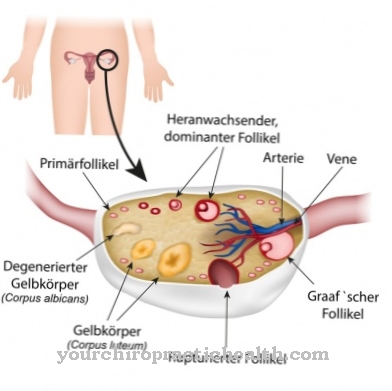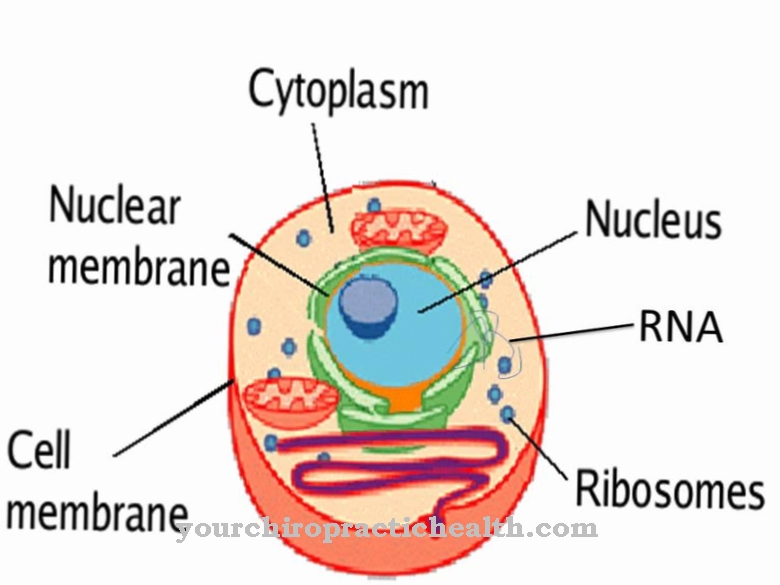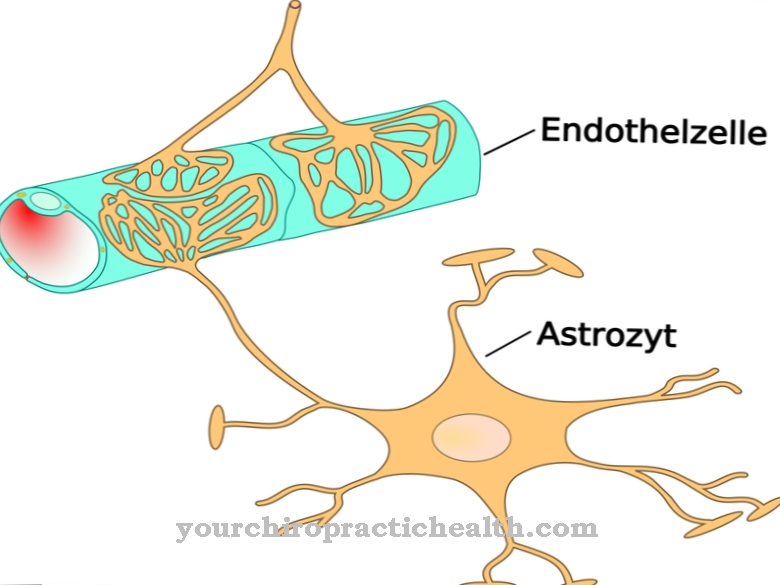The Aqueous humor in the eye chamber has to fulfill important functions for the supply of the eye. It is subject to a constant equilibrium between inflow and outflow. Disruptions of this balance can lead to serious eye diseases and even blindness.
What is the aqueous humor?
Aqueous humor is a clear liquid that resides in the anterior and posterior chambers of the eye. Its composition is similar to that of blood plasma. However, it contains less protein and bilirubin. Therefore it also appears colorless. As the main component, it consists of 98 percent water.
The remaining two percent include amino acids, electrolytes, lactic acid, ascorbic acid (vitamin C), glutathione, immunoglobulins and traces of hydrogen peroxide. The aqueous humor is formed in the ciliary body (corpus ciliare) and has the task of supplying the cornea, lens, retina and vitreous with nutrients. Furthermore, it ensures the generation of intraocular pressure to maintain the shape of the inner structures in the eye. The enzymes alpha-carbanhydrases, which catalyze the conversion of carbonic acid to water in the ciliary body, are responsible for the production of aqueous humor.
Anatomy & structure
The formation of aqueous humor takes place in the posterior chamber of the eye on the ciliary body. Its production takes place in the epithelium of the processus ciliares majores. There are three processes involved. The aqueous humor is formed through ultrafiltration, diffusion and active transport processes. Its chemical composition is similar to that of blood plasma.
Nevertheless, it has a highly specific chemical composition that makes it necessary to separate it from the bloodstream. This is ensured by a blood-aqueous humor barrier, which has a similar structure to the blood-brain barrier. The different cells of the ciliary epithelium are firmly connected to one another via "gap junctions" and "tight junctions". This creates a highly specific connective tissue layer that only allows specific substances to pass between the blood and aqueous humor.
It flows from the corpus ciliare between the iris and the lens into the anterior chamber. The main drainage (85 percent) of the aqueous humor into the plexus venosus sclerae, a venous network in the cornea, then takes place via the trabecular network in the chamber angle and Schlemm's canal. From there, the fluid returns to the bloodstream. A small percentage of 15 percent is unconventionally discharged via the vessels of the ciliary body. The trabecular structure is a connective tissue-like framework that is covered with epithelium. In the eyeball, the aqueous humor creates an intraocular pressure that maintains the internal structures in the eye.
Function & tasks
The function of the aqueous humor is to supply the cornea, lens, retina and vitreous with nutrients. It also provides amino acids, electrolytes, vitamins (vitamin C) and other substances. It also contains immunoglobulin G for defense against pathogens. Immunoglobulin G is a mixture of antibodies of class G. These antibodies are responsible for fighting viruses and bacteria in the eye. Aqueous humor is also necessary for the dimensional stability of the eyeball and the internal structures via the generation of intraocular pressure.
However, the pressure must not be too high or too low. That is why it is regulated by a finely tuned mechanism for controlling the production of aqueous humor and the outflow of aqueous humor. The regulation takes place via a stimulation of beta receptors. The production of aqueous humor is dependent on blood pressure and oncotic pressure. Elevated blood pressure leads to its increased production. The amount of aqueous humor produced is subject to constant fluctuations and decreases with age or with diabetes mellitus.
Diseases
The aqueous humor plays a major role in eye diseases that are caused by changes in intraocular pressure. In most cases, these are disorders associated with an increase in eye pressure. In rare cases, the intraocular pressure is lowered.
This can happen, for example, through a loss of aqueous humor during eye operations or accidents. If the loss of pressure is not compensated quickly, the choroidal membrane will swell. However, the increase in intraocular pressure is more important than a drop in pressure. In the long term, this leads to damage to the eye, which can lead to blindness. The resulting condition is known as glaucoma or glaucoma.
However, glaucoma is not a uniform disease, but rather a group of disorders that have to do with or are influenced by intraocular pressure. The intraocular pressure is usually between 10 and 21 mmHg. If there is constant pressure above 21 mmHg, it can lead to long-term damage to the optic nerve. Whether and when an eye disease occurs depends on individual predisposition.
In general, however, it can be said that the longer the increased pressure persists and the higher it is, the more likely it is that eye damage will occur. Increased intraocular pressure is caused by a disturbance in the drainage of the aqueous humor. Disturbances in the drainage of aqueous humor can be caused by arteriosclerosis, diabetes, age-related diseases, but also by special eye diseases. The risk of developing glaucoma increases with age. A specialty is the glaucoma attack.
Due to the displacement of the chamber angle, there is a sudden reduction in the flow of aqueous humor. In addition to the rapid deterioration in eyesight, there are eye pain, nausea, vomiting and cardiac arrhythmias. However, there are also forms of the disease with normal intraocular pressure. Here too, however, an improvement in the symptoms can be achieved by lowering the intraocular pressure with medication. Depending on the drug used, either the production of aqueous humor is reduced or its outflow via the vessels of the ciliary body is increased.
You can find your medication here
➔ Medicines for eye infectionsTypical & common eye diseases
- Eye inflammation
- Eye pain
- Conjunctivitis
- Double vision (diplopia)
- Photosensitivity























.jpg)



